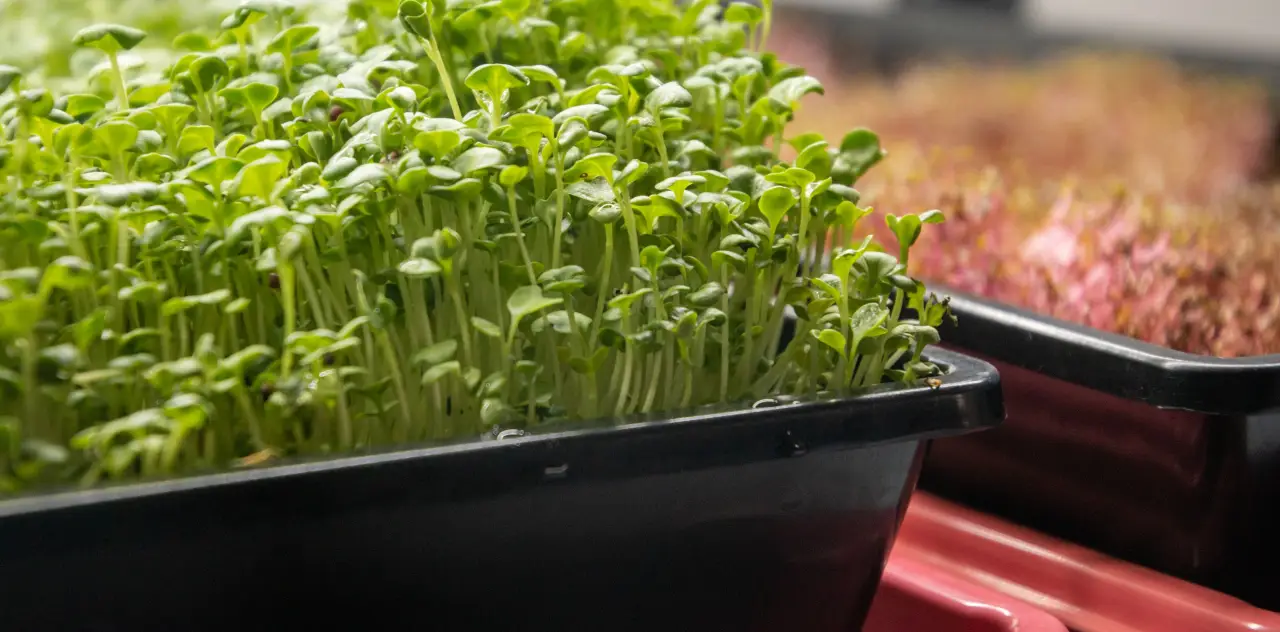The Advantages of Weighted Germination for Microgreens: Maximizing Growth Potential

Introduction
Microgreens have gained immense popularity in recent years for their intense flavors, vibrant colors, and exceptional nutritional value. These miniature versions of fully grown plants pack a punch when it comes to taste and health benefits. One technique that has emerged in the realm of microgreen cultivation is the practice of placing weight on them during the germination period. In this article, we will explore the advantages of using this method, delve into which microgreens benefit the most from weighted germination, and identify those that should not be subjected to this technique.
The Advantages of Weighted Germination
- Enhanced Nutrient Absorption: Applying gentle pressure on germinating microgreens encourages the development of a more robust root system. The weight helps to stimulate root elongation and branching, allowing the plants to absorb water and nutrients more efficiently from the growing medium. Consequently, this enhanced nutrient absorption translates into healthier and more nutrient-dense microgreens.
- Improved Stem Strength: Weighted germination prompts microgreens to develop stronger stems, making them less likely to flop or become leggy. The added pressure causes the plants to strengthen their cell walls and increase cell division, resulting in sturdier and more upright growth. Microgreens with well-developed stems are not only visually appealing but also easier to harvest and handle during the cultivation process.
- Increased Leaf Expansion: The weight applied during germination can contribute to larger leaf expansion in microgreens. The gentle pressure stimulates the unfolding and stretching of the cotyledons, the embryonic leaves, resulting in broader and more developed foliage. This characteristic is especially advantageous when cultivating microgreens that are prized for their leafy texture, such as spinach or kale.
Some Microgreens That Benefit from Weighted Germination
- Sunflower: Sunflower microgreens are known for their mild nutty flavor and high vitamin content. Applying weight during germination helps these microgreens develop strong roots and thick stems, enabling them to support the weight of their large cotyledons. Weighted germination promotes healthier growth and prevents toppling, resulting in robust and visually appealing sunflower microgreens.
- Pea: Pea microgreens possess a delicate and sweet flavor, making them a popular choice for salads and garnishes. The weight applied during germination encourages pea microgreens to develop thicker stems, providing better structural support. This technique ensures that the microgreens grow upright and prevents them from bending or drooping under their own weight.
- Radish: Radish microgreens are known for their peppery flavor and vibrant red or purple stems. Weighted germination helps radish microgreens establish a solid root system, enabling them to absorb essential nutrients and water effectively. This technique results in more substantial radish microgreens with a more robust flavor profile.
Some Microgreens That Should Not be Weighted during Germination
As a guide, any microgreen that is “fragile” would not be good candidates for weight.
- Cilantro: Cilantro microgreens possess delicate and feathery leaves, and applying weight during germination may lead to damage or distortion. Cilantro microgreens are better left unweighted to allow for proper leaf expansion and to preserve their distinctive appearance.
- Basil: Basil microgreens have tender and fragile stems, and placing weight on them during germination can hinder their growth and compromise their delicate flavor. It is advisable to avoid weighting basil microgreens to ensure their healthy development and to maintain their characteristic taste.
How and when should you apply weights to microgreens?
The timing and duration of using weights on microgreens during the germination process can vary depending on the specific variety being cultivated. Generally, weights are applied once the seeds have been sown and just after the initial watering or misting. Here are some general guidelines:
- Timing: Once the seeds are evenly spread over the growing medium and have been adequately watered, place the weights on another tray and place the tray on top of the seeded tray. This is typically done immediately after sowing or within a few hours.
- Duration: Leave the weights on the microgreens for a specific period, usually around 2 to 4 days. This timeframe allows for initial root development and promotes the desired benefits of weighted germination, such as stronger roots and stems. However, it’s important to monitor the microgreens closely during this period to ensure they are not becoming overly compressed or damaged. If you stack your microgreen trays and put the weights on the very top, then make sure you keep an eye on them so they don’t tip over! Four to five trays is normally the maximum we stack.
- Removal: After the recommended duration, carefully remove the weighted tray from the microgreens tray underneath. Gently lift the weighted tray and avoid disturbing the developing roots and stems. At this point, the microgreens should continue their growth without the need for additional weight.
It’s crucial to note that these guidelines are general and need to be adjusted based on the specific microgreen variety, growing conditions, and personal experience. Some microgreens may require shorter or longer durations of weighted germination, and it’s essential to observe the plants’ response and adjust accordingly.
Always closely monitor the microgreens during the weighted germination process to ensure they are not experiencing any adverse effects. If you notice signs of stress, such as yellowing, wilting, or excessive bending, remove the weights immediately to prevent further damage.
Remember, microgreens are delicate, and their response to weighted germination can vary. It’s best to experiment and observe the results to determine the optimal timing and duration for your specific microgreen varieties.
Conclusion
Weighted germination can significantly benefit specific microgreens by enhancing nutrient absorption, promoting stronger stems, and increasing leaf expansion. Microgreens such as sunflower, pea, and radish thrive when subjected to gentle pressure during germination, resulting in healthier and visually appealing crops. However, delicate microgreens like cilantro and basil are better off without additional weight during the germination process to avoid potential damage. By understanding the advantages and limitations of weighted germination, microgreen cultivators can optimize their growing practices and unlock the full growth potential of these vibrant and nutritious plants.

